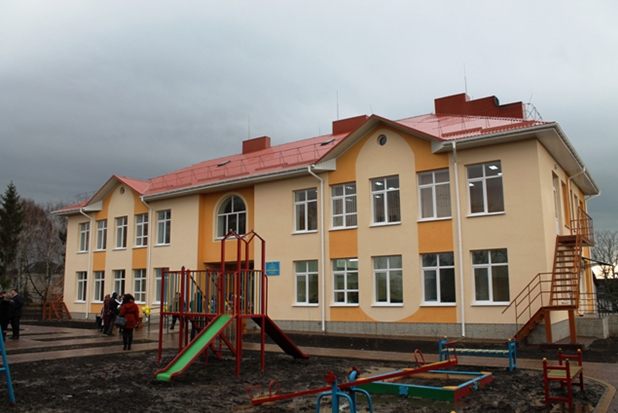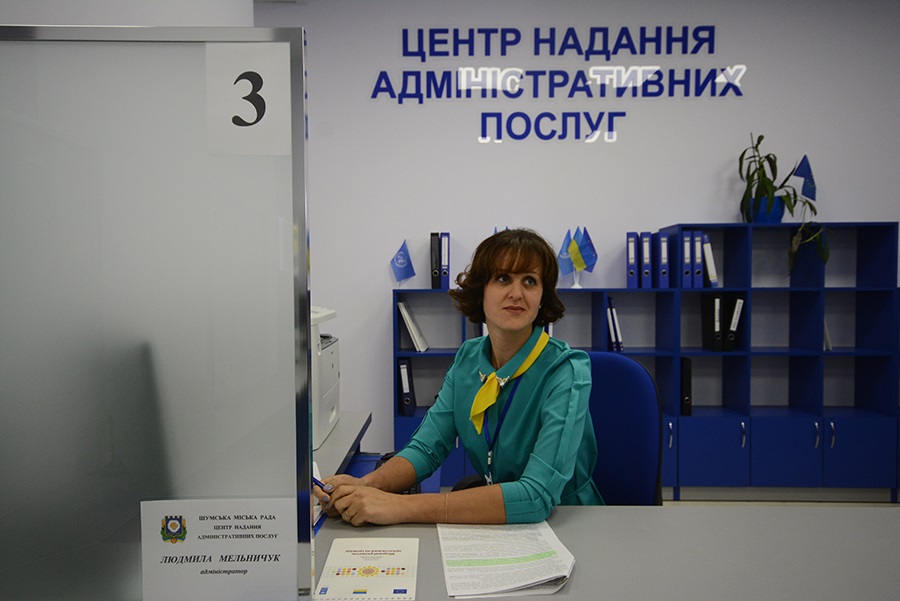For decades Ukraine has suffered from the inefficient administration of its regions, and their subsequent political and financial dependence on Kyiv, weaknesses of local communities, degradation of rural territories, as well as low investment appeal of the regions.
The key goal of the reform is to delegate powers, resources, and competencies regarding decisions on everyday issues to the lowest possible level. But since basic decentralization units – local communities – are not always capable enough to perform these functions, it is crucial to build up their organizational, financial, and human resources capacities.
This will ensure that communities are prepared to provide basic education and healthcare, establish high-quality housing and utility services, build local infrastructure, guarantee social care, and attract investments before receiving more powers and responsibilities.
Territorial reform
Ukraine inherited its present-day territorial division from the Soviet Union, and its modernization has been long overdue. Not all villages and small towns are capable of providing all of the aforementioned services. Therefore, new capable communities are being created by amalgamating town and village communities, which has been done on a voluntary basis so far. Communities become organizationally and financially capable once the constituency is large enough to provide the necessary revenues to the budget.
In 2015-2016, 184 communities successfully amalgamated, with another 184 communities preparing to elect their councils in December 2016. In total, there will be 368 amalgamated communities by the end of 2016, accounting for 25% of all communities to be created in Ukraine under the long-term decentralization plans. These results are very encouraging, especially taking into account that this process is not obligatory.
More money stays at local level
Decentralization of responsibilities will be futile unless more money remains at the community level, so fiscal decentralization goes hand in hand with the territorial reform. Before the reform, most taxes were redistributed through Kyiv, giving the national authorities an unreasonable leverage over the regions. Now more taxes remain at the local level, enabling amalgamated communities to improve budget planning and to switch to targeted budgeting.In 2016 there was 2.5 times more bituminous surface laid down than in the previous 2 years
As an example, the decentralization reform in the new amalgamated Byshiv community allowed increasing local funds from UAH 7.1 mn to 14.1 mn.

Fiscal decentralization encourages local communities to make more money and to attract investments. A newly introduced inter-budget equalization provides for equalization on the basis of income rather than expenditures – the more money is earned, the more stays in the community. In the first nine months of 2016 the local budgets have already earned 99% of their planned income.
The local self-government bodies also gained wider autonomy in administering their development budgets. In particular, as of September 2016, local self-government bodies kept UAH 10 bn in deposits in state banks. These funds will later be used for the implementation of infrastructure projects, attraction of investments, and territory development.
In terms of infrastructure, communities are most active in the sphere of road repairs. For example, in 2016 there was 2.5 times more bituminous surface laid down than in the previous 2 years. Moreover, on average, the amalgamated communities have their roads repaired 2-3 times cheaper compared to the costs incurred by governmental agencies. The funds are mostly allocated from the local budget of the amalgamated community, as in the case of Tiachiv community.

Some local funds are spent on public order and protection. With the assistance of the Ministry of Internal Affairs, but at their own expense some amalgamated communities also established new law enforcement facilities, i.e. police stations, as in the case of Pochaiv community.

Regional policy reform
Community amalgamation and fiscal decentralization are accompanied by a regional policy reform, which stipulates financial support of local communities by the state. Public funds are distributed between the regions through the State Fund for Regional Development using a transparent formula – funding is proportional to the size of the region’s population. At the start of a new year, the regions know how much money they will receive and, thus, local self-government bodies are able to prepare and submit projects to be financed by the Fund. In 2016, UAH 3 bn ($115 mn) was allocated from the state budget to this Fund, so every region of Ukraine received an average of UAH 110 mn ($4.2 mn).
The government also committed itself to financing education and healthcare sectors within separate educational and medical grants – funding for schools, hospitals, disease prevention centers, and other institutions is transferred from the state budget to the local ones. Funds that have not been used during the year remain in the accounts of local self-government bodies and can be used to finance additional initiatives to develop schools and hospitals. For example, a Horokhiv community built a new school using both its own and public funds.

Decentralization of powers
In addition to these aspects of the reform, Ukraine is actively implementing the decentralization of powers from the state to local governments and is changing the organization of activity of the local councils. More specifically, over the past few years, the local self-government bodies have been granted the powers to manage the local architecture and construction sphere; register real estate, businesses, and legal entities; keep the registry of members of the territorial community; issue passports, etc. To ensure better organization of administrative services provision, the government supports establishing centers of administrative services. Shumska amalgamated territorial community (Ternopil Oblast) implemented a series of reforms within one year of its amalgamation and opened a brand new center of administrative services. The local authorities allocated more than UAH 1mn for the construction and opening of this center.

Moreover, there have been significant changes in the organization of activity of local authorities, with best practices of good governance being systematically implemented. In particular, changes have been made to ensure an open, transparent, and accountable activity of the local government – publication of information, free access of citizens to the activities of the local authorities, electronic petitions and appeals to the local self-government. The local authorities are required to consult with the community, especially during the approval of the local budget and urban planning. Thus, citizens have been granted real instruments of control over the activities of empowered local self-government bodies.
From 2017 on local authorities will cover utilities and energy expenses of their educational and healthcare establishments. Such a transfer of functions is aimed at encouraging local authorities to implement energy saving measures, modernize networks and increase energy efficiency. The state will support this reform by establishing in 2017 the Energy Efficiency Fund.
Human Capacities
Together with organizational and financial changes aimed at strengthening the role of amalgamated communities, it is crucially important to invest in human resources development. Key role in this sphere is played by international donors and civil society organizations. Major foreign decentralization projects are USAID-funded “DOBRE”, EU’s “U-Lead with Europe”, Swiss DESPRO, as well as Council of Europe’s decentralization program, and they are aimed at building capacities of the amalgamated communities, training newly elected councilors and mayors, council staff, local activities etc.
Civil society organizations (the Ukrainian Center for Independent Political Research, the Institute of Political Education, the Civil Society Institute, the Reanimation Package of Reforms and others), as well as Associations of Ukrainian cities, towns, and villages are also actively involved in educational work and hold trainings for local officials and activists.
The Ministry of Regional Development has launched a hotline where the representatives of the amalgamated communities can get consultations on the organization of council activities, budget planning etc.
In general, it is hard not to recognize the success of decentralization reform, in the course of which amalgamated territorial communities have been given every opportunity for development, territory planning, and autonomous administration of their own funds. However, much more remains to be done, beginning with the adoption of a package of draft laws aimed at facilitating further decentralization (draft laws No 4772, No 4773 and No 4676), which Rada has to pass this plenary week already. Additionally, it is equally important to ensure that those capable amalgamated communities that will elect their councils in December 2016 are included in the State Budget 2017 for inter-budget relations.
Further legislative work, effective implementation, active leadership and strategic vision – these are the preconditions for sustainable community development and a comfortable life for all of Ukraine’s citizens.
Authors:
 Ivan Lukerya, expert of the Ukrainian Center for Independent Political Research
Ivan Lukerya, expert of the Ukrainian Center for Independent Political Research
 Olena Halushka, head of international relations department of the Reanimation Package of Reforms
Olena Halushka, head of international relations department of the Reanimation Package of Reforms






